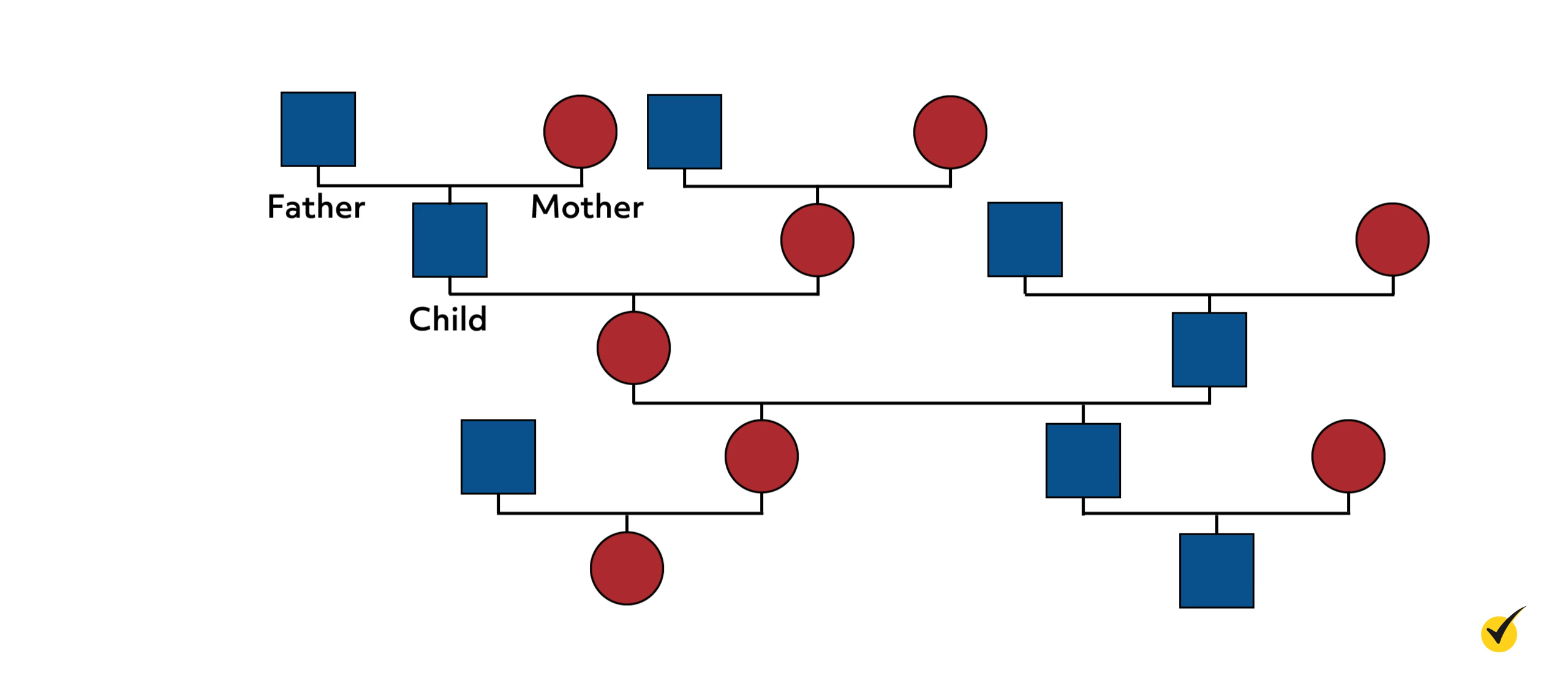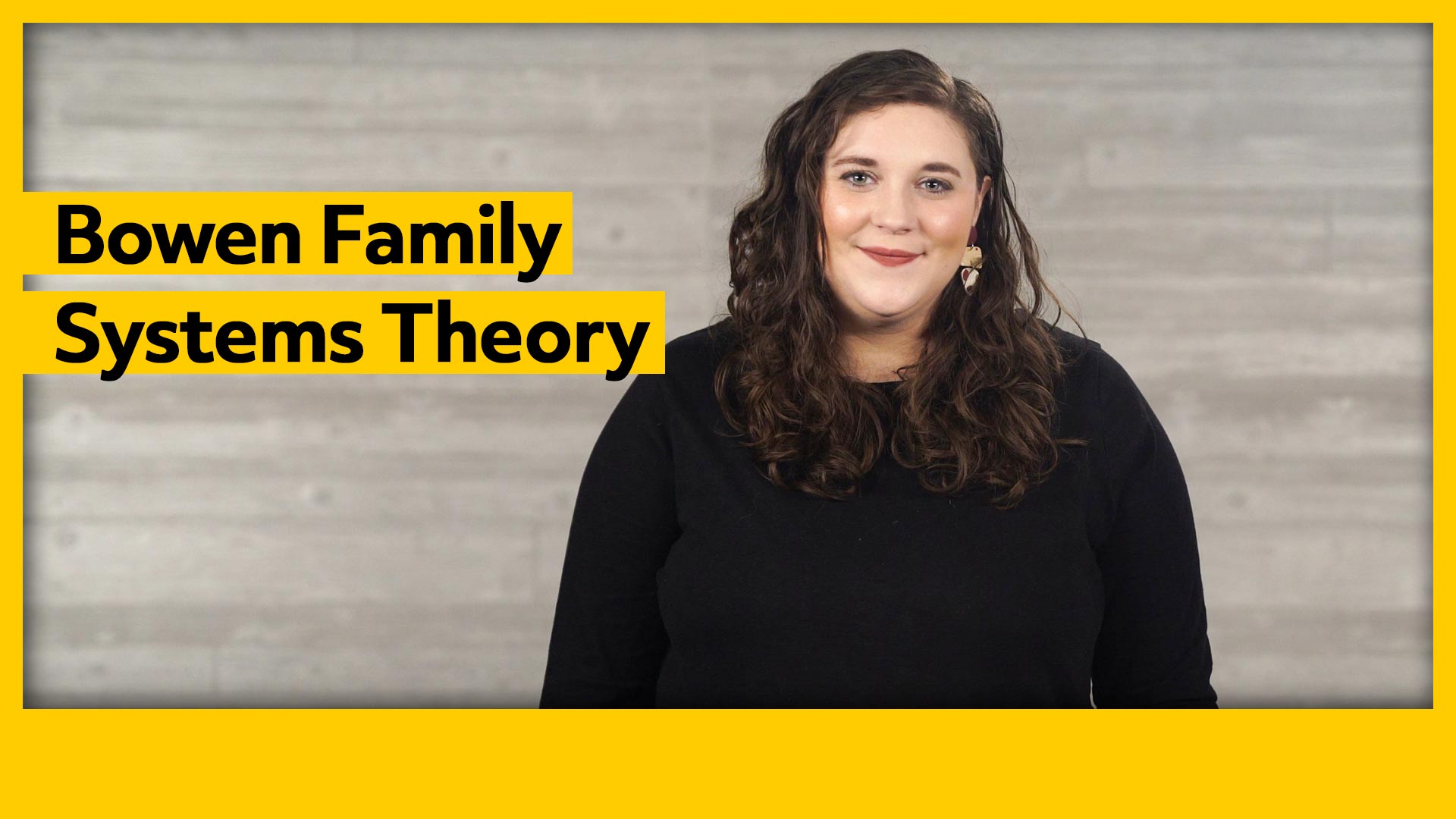
Welcome to this video about the Bowen Family Systems Theory. Murray Bowen was a psychiatrist who began his career in psychiatry at Menninger Foundation in Topeka, Kansas and later worked at the National Institute of Mental Health and Georgetown University.
Bowen was interested in the social, psychological, and physical aspects of psychiatry and came to believe that a person must be viewed in the context of family.
In the 1960s, Bowen introduced the Family Systems Theory, which focused less on the individual’s psyche and more on the individual’s relationships.
Bowen considered the family as an emotional unit with each member of the family affecting every other member so that an individual is a reflection of, and inseparable from, the family.
Family Systems Theory is based on 8 interconnected concepts, which are not sequential. These include:
- Relational triangles
- Scale of differentiation
- The nuclear family emotional process
- The family projection process
- The multigenerational transmission process
- Sibling position
- Emotional cutoff AND
- The societal emotional process
The Family as an Emotional Unit
Let’s talk about these concepts one at a time.
According to Bowen, the triangle is the basic unit of any emotional system, which is comprised of interlocking triangles, such as those found in nuclear and extended families.

Triangles are inherently unstable because they are composed of a dyad and an outsider. A dyad, which consists of two people, is an unstable system because it tends to fall apart with stress.
But, when one member of an apparently stable dyad is stressed or unhappy, the dyad becomes unstable and the third person creates a different stable dyad, leaving one person in the original dyad the outsider, and this process continues, triangle after triangle.
In a calm state, the preferred position is in the dyad, so the outsider will try to join, but in a tension state, the outsider position is preferred because it is outside of the conflict.
In any triangle, the uncomfortable one makes the move. The triangle is in constant motion as tensions arise and new interlocking triangles are formed.
Bowen believed that the tensions created in the triangles are passed on from the top down as dyads form and break apart and new triangles are added to try to bring about equilibrium, so if an individual has problems, such as mental health or behavioral issues, then the therapist needs to look not at the individual, but at those at the top of the triangles.
Scale of Differentiation
The next concept is the scale of differentiation. Bowen stated that human functioning lies along a continuum from low self-differentiation (immature) to high (mature). This is one of the most important concepts in Family Systems Theory.
At the lower end of the scale, feelings and the intellect are merged and people are unable to differentiate between feelings and thoughts. If they feel something, that is what they believe, so they are in an unfree state.
Because they are ruled by their feelings, they often expend so much energy reacting to others and seeking love and attention that they can be miserable. They may be very dogmatic in their beliefs and may rebel. They have a poorly defined sense of self and are immature.
Those higher on the scale, on the other hand, have an awareness of both their feelings and intellect, so they are in a free state. They can react with feelings but still apply intellect because they are separate. These people have more individuality, a more clearly defined sense of self, and more maturity.
People tend to marry or partner with someone who is about at the same level on the scale, so they have approximately the same level of emotional maturity.
Another concept is that of the nuclear family emotional process. The nuclear family consists of the mother, father, and children. Bowen stated that there is a fixed amount of immaturity in any nuclear family that must be dealt with in some way.
A typical characteristic of a nuclear family is that problems tend to come to rest more in one person than another.
According to Bowen, there are four relationship patterns common to families:
- Marital or partner conflict.
- Dysfunction of one spouse or partner.
- Impairment of one or more of the children.
- Emotional distance from one another.
Bowen discussed the core relationship between 2 people, such as the man and the woman, stating that one always gives way to the other. They achieve a state of equilibrium if each invests equal psychic energy in each other, but problems arise if one cannot fulfill this.
For example, if some of the woman’s psychic energy is directed to a child, causing instability in the relationship, the man may begin to feel unloved and cut himself off.
People tend to marry spouses or partner with someone whose family of origin had a similar dynamic as their own and then they often duplicate that system when building their own family, but immaturities that they bring with them must be dealt with, usually in one of 3 ways:
- First, they keep their distance from each other so they can function, often fighting and making up.
- Second, one experiences physical, emotional, or social dysfunction, such as drinking, trouble with the police, loss of job, or physical ailments such as asthma or arthritis AND
- Third, the problems are projected onto a child and into the next generation.
The family projection process is the next major concept. Projection typically occurs in all families to some extent. The child takes on some of the tension and stress, providing some relief to the parents, so parents are often not motivated to solve the problems between each other.
In most cases, projection involves only one or two children while other children remain unscathed. So, children in a dysfunctional family may have very different experiences.
First children are often the target, but projection can also be aimed at the youngest or at a disabled child.
Most often, the mother projects onto the child because their relationship tends to be the closest, although it can occur with the father as well. The more the child is impacted by projection, the more the child’s life is likely to become disorganized.
Multigenerational Transmission Process
Another concept is the multigenerational transmission process. Problems can move down from a distant part of a system (such as from the parent’s families of origin), and become evident in an individual in the nuclear family.
The child who is the victim of marked projection typically is further down the scale of differentiation than the parents and has more impairment, resulting in regression that is passed on to the next generation because, remember, people tend to marry those who have the same level of differentiation and repeat the patterns that they experienced.
For this reason, some families tend to flourish over time and move up the scale and others tend to increasingly regress and move down the scale.
Another important concept is that of sibling position. Bowen stated that a large amount of one’s personality is determined by sibling position in the family.
For example, the oldest children are often likely to be the most responsible and to acquire the expectations of the parents toward their gender roles. These children are often highly motivated and become leaders.
Middle children often receive less attention, and this can make them insecure but also more independent.
The youngest may have the least expectation and remain the “baby” in a sense. However, if an oldest child receives projection, this child may take on the characteristics of a younger child because the projection impairs the child’s development.
In some cases, people choose emotional cutoff, which means they distance themselves from others in the family system in order to reduce stress as a solution to problems, such as unresolved attachment issues.
Sometimes, people achieve emotional cutoff by moving away or simply visiting less often because visits can cause emotional stress as old interactions resurface. However, emotional cutoff is not always a solution as the stress from emotional cutoff is sometimes intense.
The concept of the societal emotional process extends the nuclear family emotional process to that of society, showing that society goes through periods of regression during which it is more unstable.
This instability may be influenced by many different factors, such as environmental changes, economic health, and overpopulation. As differentiation erodes, society focuses more on feelings and less on rationality, resulting in chaos.
When applying the Family Systems Theory to therapy, the therapist focuses less on the individual and more on the relationships that have shaped the individual.
As part of therapy, Bowen advised creating extensive family genograms by interviewing an individual’s family members to develop a comprehensive family history going back for at least 3 generations in order to understand family dynamics.
All family members are encouraged to share thoughts and feelings related to their roles in the family. The family then works together to find solutions to their problems and to learn how to provide support to each other.
Thanks for watching and happy studying!
- “BOWEN THEORY | Bowen Theory Academy.” n.d.
- Devlin, Karen. 2019. “Family Systems Theory Definition & What Is It? | Regain.” Regain.us
- “Family Systems Therapy.” Goodtherapy.org. January 30, 2018
- “Introduction to the Eight Concepts.” The Bowen Center for the Study of the Family
- “Learn about Bowen Theory.” The Bowen Center for the Study of the Family
- “Murray Bowen Biography.” 2011. Goodtherapy.org

